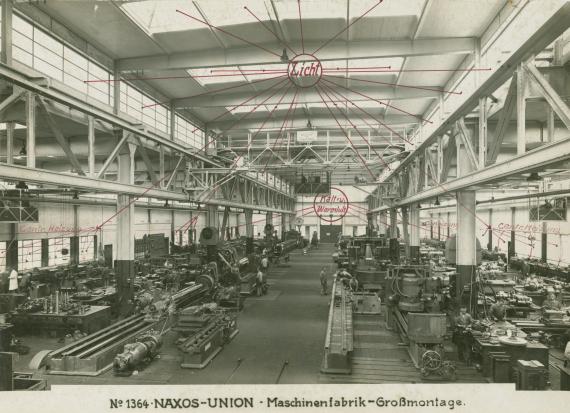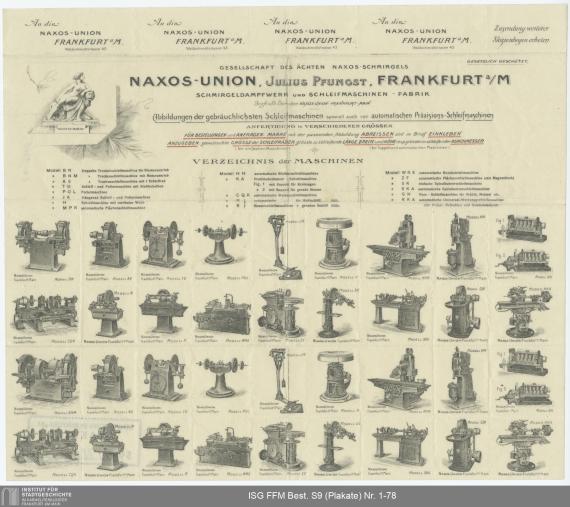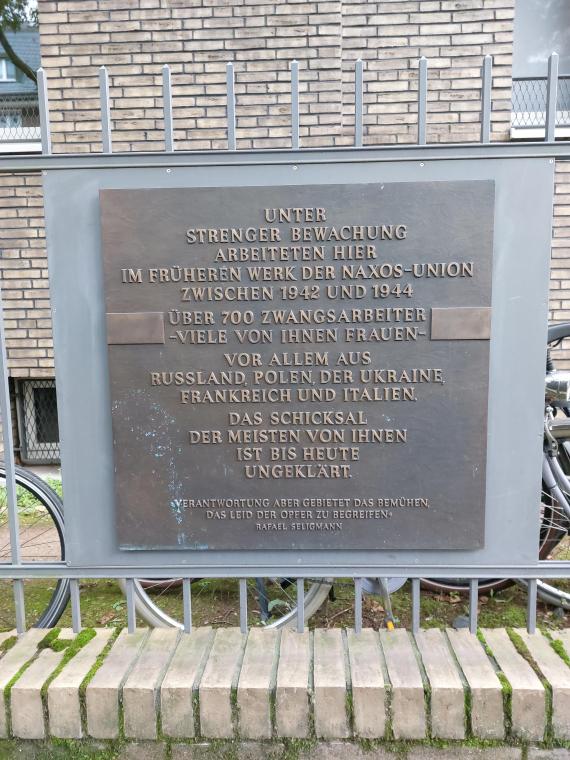Wittelsbacher Allee 35 (Gedenktafel)
60316 Frankfurt am Main
Germany
A merchant from Darmstadt, Julius Pfungst initially worked in the processing of hare and rabbit fur after setting up his business in Frankfurt. In 1871, however, he pulled off a coup that was to establish the success of the family business: he acquired the exclusive right to sell the emery mined on the Greek island of Naxos in Germany. In the same year, Pfungst founded the "Gesellschaft des ächten Naxos-Schmirgels". In the following decades, he expanded industrial production of the coveted abrasive on a large scale. The manufacture of grinding machines was also added. The factory building on the "Klickerbahn" (today Waldschmidtstraße 43) soon reached its capacity limit and new factory buildings were erected on Wittelsbacher Allee. The Naxos Union assumed social responsibility for the workforce by establishing a workers' pension fund. Arthur Pfungst, the successor to his father Julius Pfungst, who died in 1899, also felt committed to the common good. He supported the founding of a public library and promoted the efforts of public education. In his will, he decreed the establishment of a foundation which was to use the net proceeds of the Naxos Union to promote workers' education. The Dr. Arthur Pfungst Foundation was established in 1918 and from 1922 was managed by Marie Eleonore Pfungst, Arthur Pfungst's sister. Under pressure from the National Socialists, she left the foundation in 1936. Rudolf Herbst, who had already joined the company in 1900, became managing director of the foundation and Naxos-Union. In 1939, the foundation was renamed the "Waldschmidt Foundation"; after 1945, the old foundation name was restored. Marie Eleonore Pfungst was murdered in the Theresienstadt concentration camp in 1943. Between 1942 and 1944, Naxos-Union employed more than 700 forced laborers from various countries. In 1989, Naxos-Union was converted into a public limited company. Several production facilities of the former Naxos-Union are now owned by the DVS Technology Group based in Dietzenbach. The Naxoshalle (Waldschmidtstraße 19), which has been preserved and is a listed building, now houses various cultural institutions such as the Willy Praml Theater, the cabaret "Die KäS", naxos.KINO and the Studio Naxos theater.




Add new comment